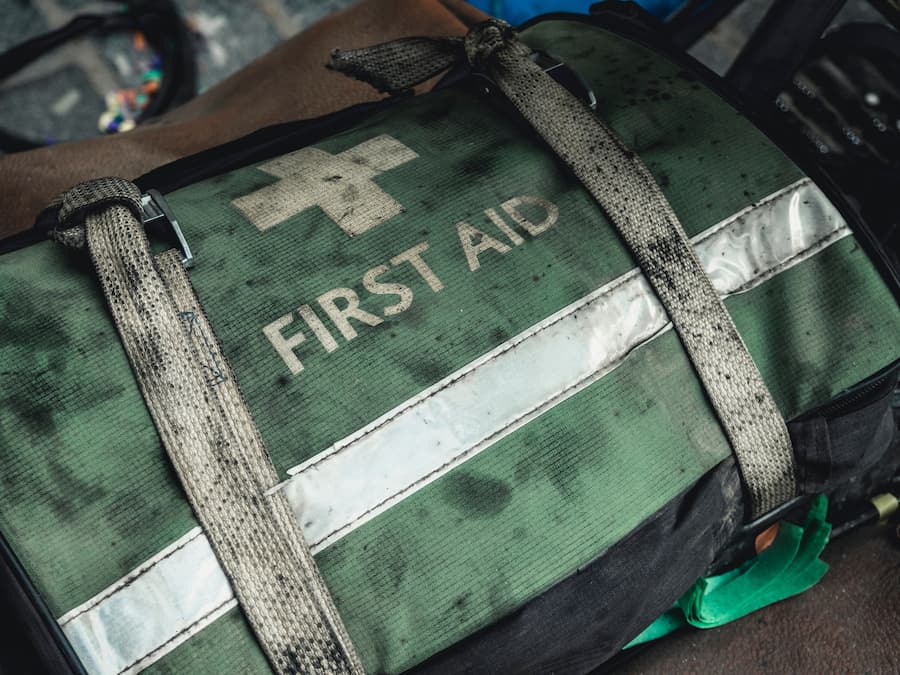How to choose a first aid kit

A first aid kit is an essential and often underappreciated item at most construction sites, businesses and venues. Having a well maintained and stocked kit can add vital minutes to the response an injured person receives and may even save a life.
Many first aid kits on the market are designed to service everything from babies to pet owners, so we thought it would be helpful to give you some tips on how to choose a kit that would best fit your circumstances.
Read on to find out more.
Assess the level of risk
It is unrealistic to believe that you will be prepared for every eventuality, but ensuring that your first aid kit matches the level of risk the activity on your site presents is essential. If there is a low probability of serious injury, like in an office, your kit won't need to be stocked at the same level as one servicing a warehouse.
A high-risk site would be one that may present the risk of chemical burns or eye injury. If you weld, use heavy machinery or cut material at your site, you want to ensure your kit can assist in an emergency involving severe cuts or broken bones.
If poisonous or noxious chemicals are used at your site, consider what emergencies may arise regarding distressed breathing or eye injury.
Your safety representative or committee can help you work out the type and seriousness of hazards present at your organisation and the injuries that can occur from these.
That way, you will ensure that the kit you procure is equipped with items that can provide vital, appropriate, and immediate help.
Consider your location
How long will it take for first responders to reach your location? How far are you from the nearest medical facility? These are questions you must consider because, although it may not be ideal, your first aid kit is in effect your first responder. If you are at a remote or hard to access site, your kit should be compressive.
You should also ensure that there is more than one person at your location trained in administering first aid. The trained first aiders must renew their certifications regularly to ensure they're up to date with current practices.
Often forgotten when it comes to remote areas are first aid items that can assist with breathing difficulties and allergic reactions. Equally, check with your employees if they have any specific health problems that your first aid kit need to cater to. For example, if someone on your team has a heart condition, installing a defibrillator on-site could be beneficial.
The size of your team
We always hope that we never have to encounter an emergency at work. The idea that more than one person could be seriously injured at the same time may seem unimaginable, but it can happen. If you are at a high-risk site, you want to make sure that you have many bandages and splints to service your team.
Your kit must be large enough to store the first aid items you need and service the number of people under your care. This may mean having a few kits on site. Consider your space If your team is spread out, portability is essential.
Getting the kit to the injured person, especially if it is an injury where moving the person is neither recommended nor possible, can mean the difference between life and death. In most instances, having both a fixed and portable kit is recommendable.
Have one that can be grabbed and placed in a backpack or use and a comprehensive fixed kit with a broader range of items. Your fixed first aid kits should be located nearby areas where there is a higher risk of injury. Also, consider where you will have the kit stored when it is not in use.
Getting your kit wet is the fastest way to render it useless. So ensure that it is stored in a dry place and, if possible, kept in a waterproof/dustproof container. This is vital if you work with water or in a space that is exposed to the elements.
The basics
At the very least, your first aid kit should include
- Cardio-Pulmonary Resuscitation (CPR) flow chart
- Assorted sizes of adhesive strips and wound dressing
- Triangular bandage for slings
- Wound dressings
- Gauze for cleaning wounds
- Tweezers
- Sterile saline solution or sterile water for cleaning eyes or wounds
- Antiseptic solution
- Re-usable ice pack
This is by no means a comprehensive list, but it should be considered the absolute minimum you should have in your kit.
Reach out to an expert
If you need further advice, reach out to Jaybro. As one of the country's leading suppliers of construction consumables in Australia, we not only offer a wide range of first aid kits but can assist you in selecting one that will perfectly fit your needs.
 Sign In
Sign In 

